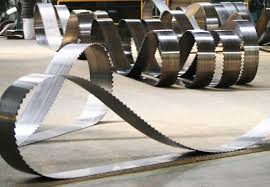Tech News
Key Features to Look for in an Enterprise Asset Management System
As companies grow and their operations become more complex, the need for effective asset management becomes critical. At the heart of this endeavour is the Enterprise Asset Management (EAM) system; a set of processes, tools, and strategies designed to manage the life cycle of a company’s physical assets, including their acquisition, usage, maintenance, and eventual disposal.
The goal of a good EAM system is to help companies reduce costs, improve efficiency, and maximise the value of their assets. However, not all EAM systems are created equal, and the specific needs of a business may vary. Therefore, it’s essential to understand what to look for in an Enterprise Asset Management system.
Here are some of the key features that a robust EAM system should possess:
- Comprehensive Asset Lifecycle Management
At its core, an EAM system should provide end-to-end management of your company’s assets. This includes tracking the entire lifecycle of each asset, from acquisition and deployment to maintenance and eventual disposal. By having a clear picture of each asset’s life cycle, companies can make informed decisions about when to maintain, replace, or decommission assets.
- Predictive Maintenance
Modern EAM systems leverage advanced technologies like artificial intelligence (AI) and machine learning to provide predictive maintenance capabilities. This feature enables the system to anticipate potential equipment failures before they occur, allowing businesses to schedule necessary maintenance and prevent costly unplanned downtime.
- Mobile Accessibility
In the modern business landscape, mobility is key. An EAM system that is accessible via mobile devices allows employees to update asset information in real-time from anywhere, enhancing the accuracy and efficiency of asset management.
- Integration Capabilities
An EAM system shouldn’t exist in a vacuum; it should be able to integrate seamlessly with other business systems like Enterprise Resource Planning (ERP), Computerised Maintenance Management System (CMMS), and others. Integration allows for streamlined data exchange and consistency, eliminating manual data entry and the risk of errors.
- Real-Time Analytics and Reporting
EAM systems should provide real-time analytics and comprehensive reporting capabilities. This feature helps decision-makers understand how assets are performing, identify trends, forecast future needs, and make data-driven decisions.
- User-friendly Interface
Lastly, but equally important, an EAM system should have an intuitive, user-friendly interface. This ensures that everyone in your organisation can use the system effectively, reducing the need for extensive training and increasing adoption rates.
H3: In a world where businesses strive to achieve operational excellence, an Enterprise Asset Management system plays a crucial role
By focusing on these key features when choosing an EAM system, businesses can ensure they select a solution that will help them maximise the value of their assets, boost efficiency, and stay competitive in the market. But remember, the most effective EAM system is one that aligns with your unique business needs and goals. Therefore, always ensure that the chosen solution can be customised and scaled as your business grows and evolves.
Related Posts












